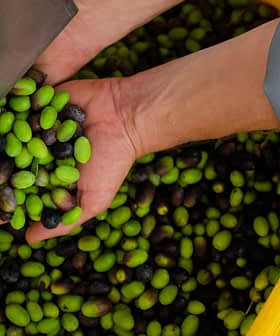Global virgin olive oils and non-virgin olive oils imports have significantly decreased during the 2020/21 crop year, according to the data reported by the International Olive Council (IOC).
Between October 2020 and August 2021, total olive oil imports reached 813,476 tons, representing an eight-percent drop compared with the previous season.
Virgin olive oils constituted 76 percent of all imports, followed by non-virgin olive oils with 19 percent and olive pomace oils at six percent.
See Also:Olive Oil Trade NewsThe 2020/21 crop year was heavily affected by the consequences of the Covid-19 pandemic on olive oil commercialization, storage volumes, price and consumption.
Russian imports increased 12 percent compared with the same period during the previous crop year.
Meanwhile, there was a more modest six-percent rise in Canadian imports and a four-percent increase in Brazilian olive oil imports.
Still, olive oil imports into the European Union from countries outside the bloc fell 31 percent. Significant drops also were reported in Japan ( – 16 percent) and China ( – 6 percent). Imports to the United States also decreased one percent, falling to 314,791 tons.
On the other hand, E.U. countries confirmed their pivotal role in supplying the olive oil global market. Spain remains responsible for providing 29 percent of all global imports, a decrease of 0.7 percent. Meanwhile, the Italian share fell to 21 percent, a slightly smaller decline of 0.4 percent.
Portugal was the only major olive oil-producing nation to experience a significant drop, with imports from the Iberian country falling 11 percent to reach 88,751 tons.
Outside of the European Union, Tunisia also experienced a significant decrease, with imports from the North African producer decreasing by 22 percent. Still, Tunisia remains one of the most significant olive oil-producing countries, with 218,261 tons of olive oil imported from the country, equal to a 27-percent share of the global import market.
Significant growth was reported for Chile, with olive oil imports from the western South American country increasing by 16 percent to make up 1.6 percent of the global market. Argentina also saw its share grow 11 percent, reaching 2.5 percent of total global imports.
See Also:European Olive Oil Exports Expected to Recover as Costs Rise“Eight markets represent around 81 percent of the imports of olive oils and virgin olive oils around the world: the United States with 36 percent, the European Union with 15 percent, Brazil with eight percent, Japan with seven percent, Canada with five percent, China with four percent, Australia with three percent and Russia with three percent,” the IOC report said.
In the same period – October 2020 through August 2021 – IOC data confirmed an increase of table olive imports, which grew 7.5 percent over the previous season.
“Five markets represent around 64 percent of the imports around the world: the United States with 23 percent, Brazil with 17 percent, the European Union with 16 percent, Canada with five percent and Australia with three percent,” the report said.
The most relevant variations in table olives imports were reported in Canada, whose volumes have been slowly growing in previous years and in the 2020/21 crop year spiked 23 percent.
In Argentina, where import growth has followed a similar trend, imports rose 21 percent compared with the previous season. The United States, by far the most relevant table olive importer, has seen its volumes grow nine percent in the last season.
Spain retained the lead as the leading provider of table olives to the international market with a 20-percent share of the global volumes. Still, those numbers dropped 6.5 percent when compared to the previous season.
The second major source of table olives has been Egypt, which not only consolidated its role but has seen its market share rise by 27 percent to 70,124 tons.
With a 26-percent increase, Greece reached 13 percent of the global volumes, just behind Argentina and Morocco. The most significant variation for the period was reported for Albania, which experienced a 55-percent increase to 9,136 tons, equal to two percent of the global trade.








